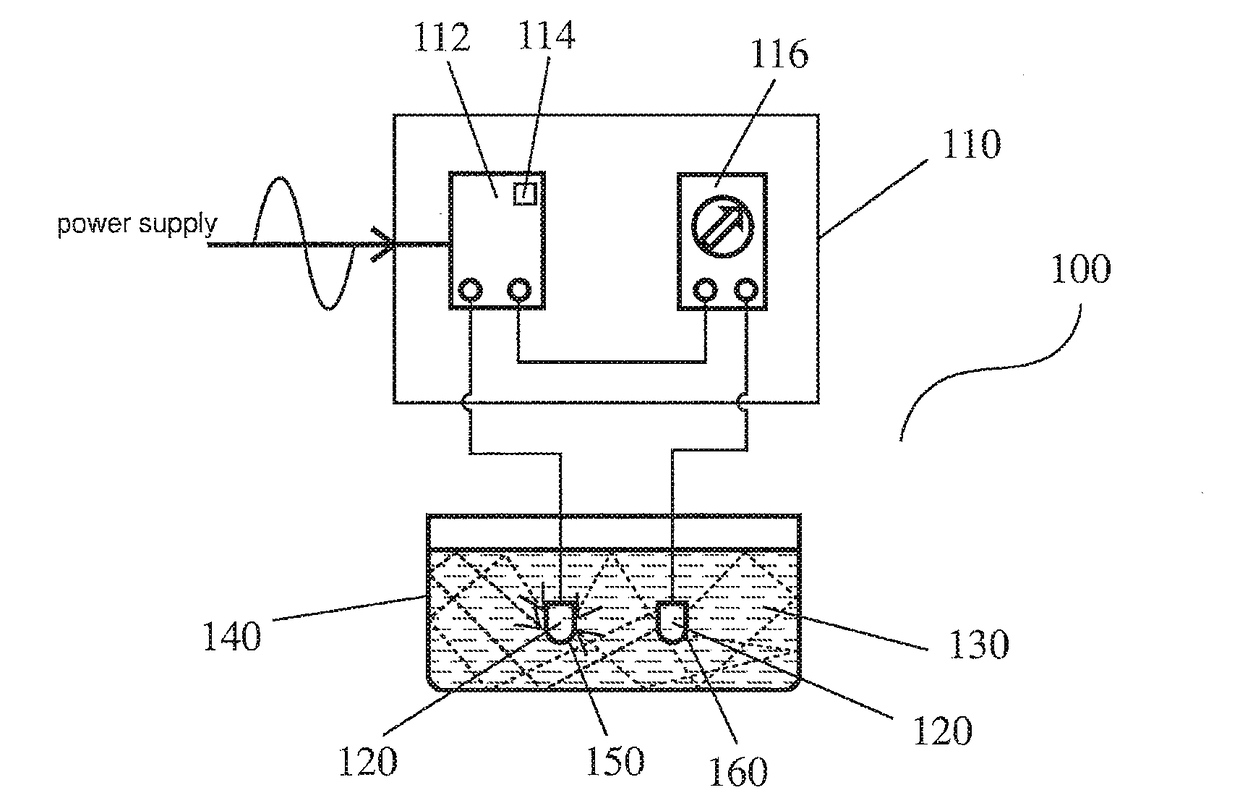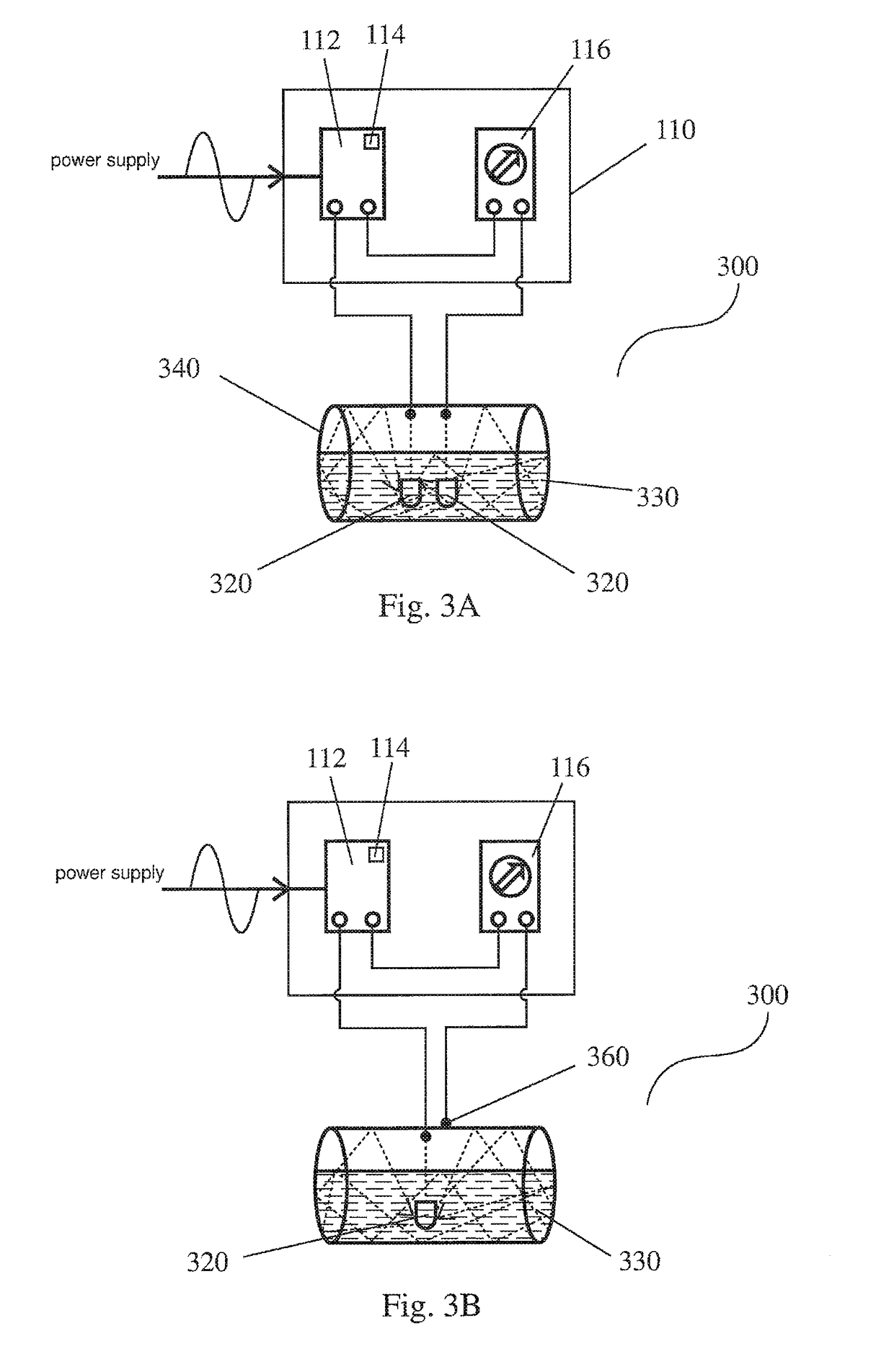Method and system for applying superimposed time-varying frequency electromagnetic wave for marine ballast water bio-fouling control
a technology of bio-fouling control and time-varying frequency electromagnetic wave, which is applied in the direction of waterborne vessels, surface reaction electrolytic coatings, water treatment water, etc., can solve the problems of not being able to eliminate the organisms living in sediment in the tank or underneath corroded steel areas, and the amount of oxidizing agent and active substances produced is harmful to the environment, so as to achieve the effect of convenient utilization and more economical
- Summary
- Abstract
- Description
- Claims
- Application Information
AI Technical Summary
Benefits of technology
Problems solved by technology
Method used
Image
Examples
Embodiment Construction
[0102]While this invention is illustrated and described in relation to non-limiting preferred embodiments, the system for applying a superimposed time-varying frequency electromagnetic wave to a target object or a target region may be produced in many different configurations, sizes, forms and materials.
[0103]The term “medium” used herein may refer to a gas, a liquid or a solid or any combination thereof, which surrounds the object, and the medium and the object form together a region that requires for desirable treatment effects. Advantageously, the medium is ionized or conductive, for example an electrolyte such as water, oil, soil and the like. In preferred embodiments of the present invention, the medium comprises ballast water.
[0104]The term “actuator” or “emitter” used herein refers to an element that is able to employ the superimposed time-varying frequency electromagnetic wave to energize the target object or the target region, such that the target object or region is subjec...
PUM
| Property | Measurement | Unit |
|---|---|---|
| frequency | aaaaa | aaaaa |
| frequency | aaaaa | aaaaa |
| sweeping frequency | aaaaa | aaaaa |
Abstract
Description
Claims
Application Information
 Login to View More
Login to View More - R&D
- Intellectual Property
- Life Sciences
- Materials
- Tech Scout
- Unparalleled Data Quality
- Higher Quality Content
- 60% Fewer Hallucinations
Browse by: Latest US Patents, China's latest patents, Technical Efficacy Thesaurus, Application Domain, Technology Topic, Popular Technical Reports.
© 2025 PatSnap. All rights reserved.Legal|Privacy policy|Modern Slavery Act Transparency Statement|Sitemap|About US| Contact US: help@patsnap.com



